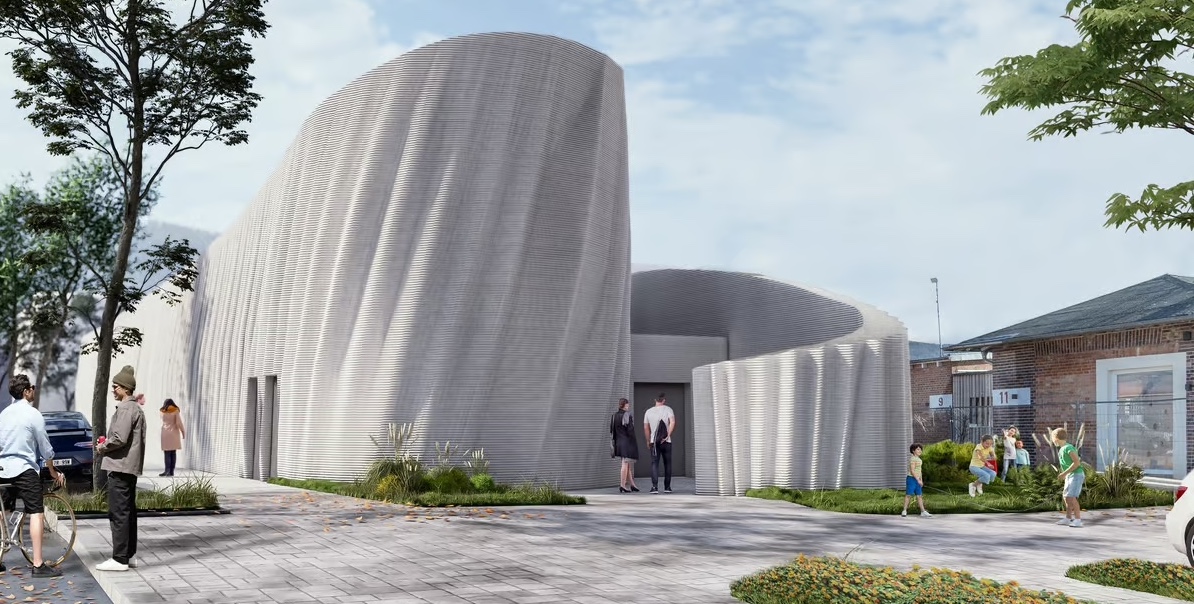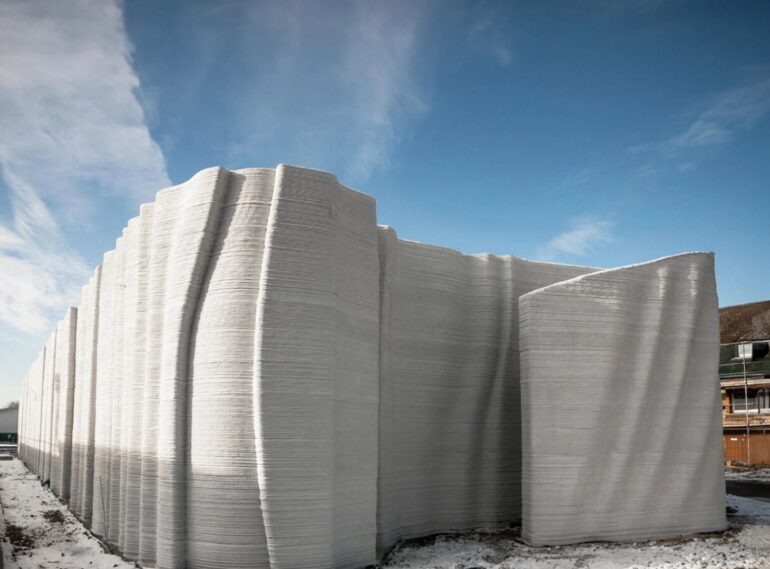In the heart of Heidelberg, Germany, a remarkable structure has emerged, reshaping the very notion of what a data center can be. The Wave House, aptly named for its captivating wave-like exterior, stands as Europe’s largest 3D-printed building, a true masterpiece of innovative construction technology and sustainable design.
Table of Contents
The Wave House: Europe’s Largest 3D-Printed Masterpiece Revolutionizing Data Centers
Historically, data centers have been synonymous with dull and uninspiring concrete facades, a consequence of stringent safety regulations. However, the city of Heidelberg sought to challenge this perception by commissioning architects SSV and Mense Korte to create a data center that would seamlessly integrate into the urban landscape, catering to the needs of local users.

The architects’ vision was bold and ambitious – to adorn the data center’s walls with a mesmerizing wave design. While this artistic concept was aesthetically stunning, it posed a significant challenge for conventional construction methods. Undeterred, the architects turned to the cutting-edge world of 3D construction printing technology, enlisting the expertise of PERI 3D Construction, COBOD, and the Heidelberg-based, family-owned real estate developers KrausGruppe.
The result was nothing short of remarkable. In a mere 140 hours, a single COBOD BOD2 printer brought the Wave House to life, layer by layer, using a recyclable cement-like mixture. The mammoth structure, spanning 600 square meters (6,600 sq ft), features exterior walls that stretch 177 feet (54 meters) long, 36 feet (11 meters) wide, and 29.5 feet (9 meters) tall, all printed at an impressive efficiency rate of 4 square meters (43 sq ft) per hour.
Dr. Fabian Meyer-Brötz, managing director of PERI 3D Construction, expressed immense pride in being part of this groundbreaking project, stating, “We are very proud to have realized our largest building to date with this project. Not only because of the size of it, but in particular due to the special shape and the parametric design used, which documents the immense design freedom of COBOD’s technology.”
While human touch was required for finishing touches such as the roof, doors, and wiring for lights and other equipment, the project’s success is a testament to the cost-effectiveness and efficiency of 3D construction printing technology. Hans-Jörg Kraus, managing partner of KrausGruppe Heidelberg, remarked on the economic viability achieved, stating, “I cannot tell you what it would cost if we had made the data center conventionally. 3D construction printing made this project economically viable.”
Henrik Lund-Nielsen, Founder and General Manager of COBOD International, expressed excitement about the technology’s potential, stating, “This data center stands as a testament to the advanced capabilities of COBOD’s technology, demonstrating our technology’s possibility of delivering not just residential buildings, but also multi-story buildings and complex structures including office spaces, warehouses, and data centers.”
Beyond its innovative design and construction methods, the Wave House project aligns with broader environmental goals. According to KrausGruppe, the 3D-printed construction process resulted in significantly less CO2 emissions compared to traditional methods, further solidifying its position as a sustainable and eco-friendly solution.
As the world grapples with a housing crisis and the construction industry aims to reduce its carbon footprint, 3D printing technology is poised to become the preferred method for future construction projects. The Wave House stands as a shining example of what can be achieved when innovation, sustainability, and artistic vision converge, paving the way for a future where data centers and other structures are not just functional but also visually stunning and environmentally responsible.

